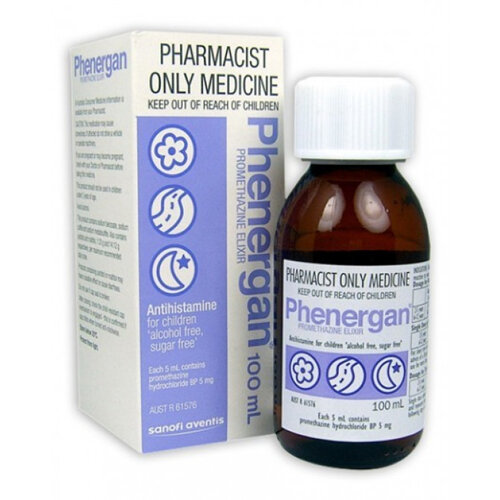In this lesson, we continue with our dispensing calculations, this time looking at inhalers and nasal sprays.
Inhalers and nasal sprays
In this lesson we continue with our dispensing calculations, this time looking at inhalers and nasal sprays. The label for each product will tell you how many doses are contained in the device. One dose is equal to one puff or one spray.
Calculations review
Take a look at the prescription below. Challenge yourself to think about how you calculate the answer before you check by clicking on the (+) symbol.
Salbutamol 100mcg Inhaler 200 doses
Sig: 2 puffs q6h
Mitte: 3/12
- How many inhalers would you dispense to ensure the patient has enough for the full prescribed period?
- This inhaler is a non-stat medicine. State the number of inhalers you would dispense at each dispensing.
- 2 puffs x 4 x 90 days = 720 ÷ 200 doses in one inhaler = 3.6 inhalers.
Can’t give 0.6 of an inhaler so round up = 4 inhalers - 4 inhalers divided into monthly lots over 3 months is not an even number but will give you dispensing of 2 inhalers for the first month, 1 inhaler for the second month and 1 inhaler for the third month. Written as = 2 + 1 + 1
Knowledge Check
Take this quiz so you can feel confident with your ability to do these types of calculations. Be sure to check the solutions before moving on to help yourself learn the material if necessary.
Eye, ear, and nose drops
Eye, ear and nose drops are calculated as 12 drops for every 1ml. In other words, every ml of the product yields (results in) 12 drops. This is important to know when we come to calculate how many dropper containers we need to dispense to the patient to ensure they have enough for the full prescribed period.
Prescriptions for eye and ear drops will usually specify if the drops are for left or right or both eyes/ears. If it is not specified, then the usual practice is to calculate for both eyes/ears.
When it comes to eye drops the prescriber may write the words “left eye”, “right eye” “both eyes” or may choose to use the Latin abbreviations. Can you guess what each abbreviation means?
And let’s review a few calculations as they pertain to eyedrops.
Remember most eye drops need to be discarded one month after opening, so be mindful in your calculation that the patient may require at least one new bottle each month.
Antibacterial Ear drop 7.5mL
Sig: 4 drops RIGHT ear tid
Mitte: 10/7
Using the prescription above, calculate the following:
- How many mls are required to ensure the patient has enough for the full prescribed period?
- How many bottles will you dispense?
Once more, carry out this calculation and THEN check the answer and suggested calculation method.
- How many mls are required to ensure the patient has enough for the full prescribed period?
- 4 drops (only one ear) x 3 times a day = 12drops
- 12drops ÷ 12drops = 1ml (12 drops = 1 ml)
- 1ml x 10 days = 10ml
- How many bottles will you dispense?
- You need 10ml
- 1 bottle contains 7.5ml which is less than 10ml, therefore 2 bottles to be dispensed.
Self-directed learning
Task 1: Work through the following calculations:
Task 2: Spend some time revising your learning on this topic.
And that’s the end of another week of learning Professional Practice! Well done. Keep up the good work.

Throughout the dispensing process, we have noted the importance of carrying out dispensing tasks accurately and ensuring all checks are made. Fortunately, errors are very rare, and by following the correct procedures, any potential errors are avoided, picked up, and corrected well before they reach the customer.
If a dispensing error does occur, it can be reported to the Health and Disability Commissioner, who will decide if a formal investigation is needed.
⚠Due to the critical nature of what can happen when errors occur, this topic is primarily review. You have the opportunity now for more practice in the types of calculations and dispensing scenarios that would occur in the real world.
Read this report by the Health and Disability Commissioner on a complaint and investigation into a pharmacy dispensing error.
After you have completed the reading, answer the following questions to ensure you understand the material.
For this next activity, refer to the Code of Health and Disability Services Consumers' Rights
[ https://www.hdc.org.nz/your-rights/about-the-code/code-of-health-and-disability-services-consumers-rights/ ]
Self-directed learning activity
Review what you have learned by answering the following review quiz questions.
Tau kē. That was a lot of calculations and considerations. Another week done.

Gastrointestinal conditions
The gastro intestinal (GI) tract is the pathway by which food enters and leaves the body. In your role as a pharmacy technician, you will be assessing and advising people who present with different gastro-intestinal symptoms.
Upper GI (oesophagus, stomach, and duodenum) symptoms are often caused by our eating behaviours for example, overeating or eating the wrong foods may cause a set of symptoms.
Some examples are:
- indigestion (dyspepsia)
- heartburn – mate taratarawai (oesophageal reflux)
- gastritis.
Research each of these examples and write a short explanation of each. Your explanation should include the typical symptoms and causes.

GI symptoms can mimic the symptoms of a heart attack and other serious conditions therefore, you should be aware of the red flags that tell you urgent medical advice is required.
Red flag warnings to get urgent medical advice:
- Aged 50 or older or 40 for Māori, Pacific Island or Asian decent
- Chronic persistent cough
- Difficulty swallowing
- Family history of gastric cancer
- Gastro-Oesophageal Reflux Disease (GORD) that occurs at night
- History of stomach ulcers
- Aspirin, NASID or prednisone use
- Persistent, long-lasting vomiting
- Severe or persistent symptoms
- Bleeding from rectum, black faeces, blood in vomit
- Suspected iron deficiency anaemia
- Unexplained weight loss
- A lump that can be felt in the stomach.
⚠When to refer to the pharmacist:
- If any of the reg flags are present
- Children less than 12
- People on a sodium-restricted diet
- People on medication that may be causing indigestion (prednisone, NSAIDs, bisphosphonates)
- Persistent indigestion despite treatment, even if they have recently seen a doctor
- Allergies to medicines
- Other health conditions, immunosuppressed, pregnant, or breastfeeding.
Treatments and advice
This scenario will give you an opportunity to consider what advice you may give a patient suffering from indigestion.
Samantha is looking for an OTC product to relieve her symptoms of indigestion. The pharmacy technician has spent some time with Samantha discussing her symptoms using the WWHAMMPA questions. There are no red flags and no indication that she needs referral to the pharmacist.
Research each of these examples and write a short explanation of each
- The product name
- The active ingredient(s)
- How the product works
- Directions for use
- Any lifestyle advice to avoid indigestion.
Constipation
Constipation is a symptom that can mean different things to different people, but the usual meaning is that a person has difficulty or infrequency with opening their bowels. Opening the bowels can vary between three times a day to three times a week in healthy individuals.
Before we look further into this condition, we need to review when to refer a customer with constipation to the pharmacist.
⚠When to refer to the pharmacist:
- Babies or young children
- Bowel motions that contain blood or are dark and look like tar
- Constipation that alternates with diarrhoea
- Lasted longer than 7 days
- People you suspect of abusing or misusing laxatives
- Symptoms of abdominal pain, bloating, fever, vomiting, or weight loss
- Recurrent, persistent, or worsening constipation
- People with allergies to medication
- People taking medication, including herbal/complementary medications
- Other health conditions, immunosuppressed, pregnant, or breastfeeding.
Scenario: How would you help a patient you believe to be constipated?
You are serving 56-year-old Suzie. You have assessed her health condition as being constipation. Now, Suzie wants to know some information about the different types of OTC laxatives that are available and their different dose forms.
Download and complete this table with the answers to Suzie’s questions. Some information has been provided for you in the table.
Activity
Bring your completed table to your next class for a class discussion.
Diarrhoea
Diarrhoea is not a disorder in itself but is a symptom of an underlying problem. The colon is the part of the intestinal system that is responsible for diarrhoea. It is here that fluids are reabsorbed into the body. If the gastrointestinal contents move through the colon too quickly, less fluid is absorbed, leaving the stools very watery.
- Acute diarrhoea - usually as a result of ingesting contaminated food or water or from a ‘tummy bug’. These attacks usually clear up in a day or two and require only supportive measures and no actual treatment.
- Chronic diarrhoea - may be the result of a serious intestinal disorder and requires investigation by a doctor.
Diarrhoea is potentially serious in infants and the elderly because of the risk of dehydration, which, if untreated, can quickly become fatal. Diarrhoea can occur on its own or at the same time as vomiting, which will result in people becoming dehydrated faster.
⚠When to refer to the pharmacist:
- Vomiting and diarrhoea together
- Children, frail, or elderly
- Diarrhoea has lasted more than 48 hours in adults
- Unable to take fluids or keep them down
- Blood or mucus in stools (dark or tarry-looking stool)
- Stool that is pale, greasy or difficult to flush
- Other symptoms such as severe abdominal pain or fever
- Recently returned from overseas
- A history of recurrent diarrhoea and constipation
- People who appear underweight
- Allergies to medication
- Health conditions, immunosuppressed, pregnant, or breastfeeding.
Treatments and advice
Oral rehydration mixtures are the mainstay of management. They contain fluids and electrolytes, and both treat and prevent dehydration. Hydralyte is an example of an oral rehydration mixture. In severe cases, water is not enough to rehydrate. They do not treat the actual diarrhoea!
It is not always important to stop the diarrhoea – in fact, often, it is desirable to let the ‘bug’ pass through. But sometimes it is necessary for convenience. There are medicines that slow down the gut and can help with cramping, such as Imodium.

Hayfever - Mate Hei
Hayfever, or allergic rhinitis is an allergic inflammation of the nasal airways. Although it is commonly called hay fever, there is no actual fever or raised body temperature associated with this condition.
The condition occurs when an allergen, such as pollen, dust, or animal dander (particles of shed skin and hair), is inhaled by a person with a sensitised immune system. It takes about two years to become sensitised to an allergen, so babies rarely suffer from hay fever. It is most common in people aged in their 20s to 40s, and most people will have had symptoms before the age of 30. The allergen causes the cells (mast cells) in the lining of the nose, eyes, throat, and sinuses to release inflammatory mediators (histamine and other chemicals). These inflammatory mediators cause inflammation in these areas of the body and result in the symptoms we see in a person with hay fever. Symptoms can range from mild to severe.
Carry out your own search for the symptoms of hay fever. Take the challenge and see if you can identify at least 5 symptoms before checking the list below.
People who have hay fever may have these symptoms:
- Eyes – itchy, red, puffy, watery
- Nose – blocked, runny, itchy, feeling of congestion, loss of smell
- Ears – blocked, itchy, feeling of congestion, earache
- Mouth – itchy
- Headaches
- Cough
- Sneezing
- Fatigue and lethargy.
There are two types of hay fever, seasonal and perennial. You may already know the difference.
⚠When to refer to the pharmacist:
As always, we must carefully assess each patient before giving advice on treatment. If any of the following are present, then you will refer to the pharmacist:
- Children
- People with shortness of breath or wheezing
- Coloured or yellow discharge from the nose or eyes
- When only one eye or one nostril is affected
- Reports of pain in sinuses or tooth pain
- If symptoms have persisted despite treatment and occur all year round
- Allergies to medicines
- Other health conditions, immunosuppressed
- Pregnant or breastfeeding
- Taking medication, including herbal/complementary medication.
Treatments and advice
Antihistamines
Antihistamine medications are one of the treatments used to treat the symptoms of hay fever. Antihistamines block the body’s response to histamine. As there are other inflammatory chemicals released from the cells that cause hay fever symptoms, antihistamines will not relieve all the symptoms completely.
Antihistamines are often the first line of treatment for mild hay fever and come in a variety of dose forms, either on prescription or OTC. They relieve sneezing, itchy eye/ear/nose/throat and dry up a runny nose/eyes:
- Liquids
- Tablets/capsules
- Nasal sprays
- Eye drops.
The tablet/capsule forms of antihistamines can be broken into two types:
Sedating:
- Can cause drowsiness/sleepiness
- May affect concentration and the ability to be alert
- Taking alcohol can make drowsiness worse
Example: Phenergan® (promethazine)
Pharmacist Only medicine

Non-sedating:
- Drowsiness is unlikely but can occur in some people.
Example: Razene® (cetirizine hydrochloride).
![[ADD IMAGE'S ALT TEXT]](/sites/default/files/Razene.jpg)
Antihistamines work best if taken before the symptoms develop, i.e. before histamine release, and can take 2 to 3 days to work. Sometimes it seems as if the antihistamines ‘stop working’ as the hay fever season progresses, and amounts of allergen increase (e.g., pollens). They are still working, but they can only cope with so much allergen. At this point, consider adding in other treatments, such as eye drops and nasal sprays.
Corticosteroid Nasal Spray
These are used for the prevention and treatment of symptoms of the nose, such as stuffy or runny nose, itching, and sneezing. They should be used at the start of the hay fever season to prevent symptoms from occurring. It can take up to a week to start working, so an antihistamine or decongestant may also be required initially.
Go to this webpage to read about steroid nasal sprays, examples of products and how to use them.
Mast Cell Stabilisers
These stabilise mast cells to prevent the release of histamine and other inflammatory mediators. Frequent administration (four to six times daily) is needed. They can be used as a preventative up to one week before allergy symptoms occur. They come in a variety of dose forms, including eye drops, nasal spray and oral tablets.
Decongestants
Decongestants work by narrowing the blood vessels in the nose, throat, and sinuses. This relieves the blocked, stuffy, and congested symptoms. They come in a variety of dose forms, including nasal sprays and oral tablets.
Visit Healthify to read about nasal decongestants, examples of products and how to use them.
Self-directed learning activities
Haemorrhoids – Mate tero puta
Haemorrhoids (also known as piles) is a condition affecting the lower GI tract. There are two types:
- Internal haemorrhoids
These involve the veins inside the rectum and are not usually visible. They can cause a feeling of pressure in the rectum and often bleed but are usually painless. Some people may experience a prolapse (pop out) through the rectum with a bowel motion, which can be quite painful; some easily “pop back in” either by themselves or when pushed with a finger. But others may stay prolapsed, which can cause complications. - External haemorrhoids
Veins or anal cushions that have become enlarged through straining with defecation and are visible surrounding the anal sphincter. They look like small bunches of grapes and, when inflamed, become red and very tender, itchy and/or painful and usually bleed with every bowel motion. Occasionally a blood clot forms inside an external hemorrhoid, and a hard lump forms about the size of a pea. Can be extremely painful.
Customers may find it difficult to ask for advice about this condition and talk about this part of the body. Therefore it is important that you use effective communication skills to discuss and ask questions about their symptoms fully. Consider the language you use, as medical terms may not be understood. For example, replace the words ‘stool’ or ‘faeces’ with ‘bowel motion’ or ‘poo’.
⚠When to refer to the pharmacist:
- Children
- If a person is unsure if they have haemorrhoids or not
- Haemorrhoids that prolapse out of the anus
- Change in bowel habits that have recently changed after years of regularity
- Pain with bowel movement, feeling unable to completely empty bowel
- Rectal bleeding unrelated to bowel motions
- Blood mixed into stool, not sitting on top of it
- Pus or other signs of infection around the anus
- Other symptoms—fever vomiting, unexplained weight loss, abdominal pain
- Symptoms lasted more than three weeks or not improved with treatment
- Tasking medicines that can cause constipation
- Allergies to topical medicines
- Diabetes, circulatory problems, immunosuppressed, pregnant.
Treatments and advice
Treatment can relieve the symptoms of haemorrhoids; pain, swelling and itching. Treatment depends on the severity of symptoms and if the haemorrhoids are internal or external. This may involve the use of OTC, pharmacy only and prescription products, self-care measures and prevention methods.
- Visit Healthify to learn more about the symptoms, causes, self-care, and treatment of haemorrhoids.
- Research the product Proctosedyl and make notes about the following topics.
- Dose forms and routes of administration
- Instructions for use
- Active ingredients
- How it works.
Vomiting
Vomiting is caused by a number of things. It is your body's way of getting rid of stomach contents that are harmful or irritating, by forcibly emptying them back out of your mouth.
Common causes of vomiting in adults include gastroenteritis (tummy bug), early pregnancy, motion sicknesses, certain drugs and medications, intense pain, emotional stress, various viruses and certain smells or odours.
- Nausea is the sensation of needing to vomit.
- Retching is a vomiting action, but no stomach contents are expelled.
- Vomiting is the involuntary forcible expulsion of the stomach contents through the mouth. Vomiting is usually preceded by nausea, pallor, sweating, excessive salivation, and slowing of the heart rate.
Vomiting occurs when the vomiting centre in the brain is activated. This may occur as a result of information being received from either the digestive tract or directly from the frontal lobes of the brain. Also, the balance mechanism in the ear is capable of stimulating the vomiting centre (motion sickness). Once activated, the vomiting centre sends a message to the diaphragm (which presses sharply downwards onto the stomach) and to the wall of the abdomen (which presses inwards). Simultaneously, the pyloric sphincter closes, and the region between the top of the stomach and the oesophagus relaxes. As a result, the stomach contents are expelled upwards.
⚠When to refer to the pharmacist:
- Vomiting and diarrhoea together
- Vomiting that has lasted more than 48 hours in adults
- Vomit contains blood or brown flecks
- Children, frail, or the elderly
- Unable to take fluids or keep them down
- Other symptoms such as severe abdominal pain or fever
- Recently returned from overseas
- People who appear underweight
- Allergies to medication
- Health conditions, immunosuppressed, pregnant, or breastfeeding.
Treatments and advice
- Persistent vomiting always requires investigation by a doctor.
- Only treat patients with vomiting if you are sure that it is a stomach bug or motion sickness.
- Treatment depends on the cause, and there are not many medications that we can sell that will help.
- There is nothing available OTC to stop vomiting, but the doctor can prescribe things to help.
Self-directed learning activity
Activity
Carry out your own research for information on pharmacy treatments and advice for vomiting, and bring your findings to your next class.
Once you have completed your activity, you have another week of learning under your belt. Good job.
